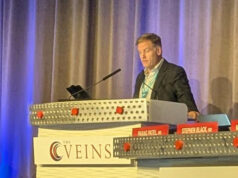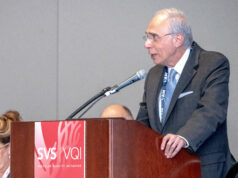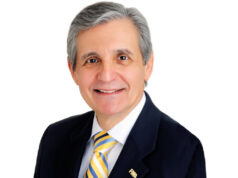Nearing 40 years of continued service to its membership, the Peripheral Vascular Surgery Society at its annual meeting elected a change in the society name to reflect the modern practice of its 1,000+ active and senior members. Originally founded in 1976, the society was designated as the Peripheral Vascular Surgery Club and later on invoked the PVSS. Now outdated, “peripheral” was once used to differentiate the emerging field of vascular surgery from “central” cardiovascular surgery. As evidenced by hundreds of VESS registrants at the most recent meeting and plenary sessions in Steamboat Springs, January 29–February 2, the membership has actively engaged and researched projects and outcomes across the spectrum of all vascular territories using the best of modern vascular and endovascular techniques.
Indeed, the VESS reflects our appropriate American Board Certifications, many division and practice names, as well as common journals in which the membership are often published and contribute. General knowledge of the role of vascular surgery in public health is increasing through a variety of mechanisms, and the importance of the marriage of endovascular surgery to traditional perceptions of vascular surgery has both timely and strategic implications for VESS going forward. The process of VESS name was researched since 2008 and carried forth with support of the past 26 PVSS presidents. An opinion poll was taken from the membership, and among respondents, the Vascular and Endovascular Surgery Society was the leading choice by an overwhelming margin. At our recent winter meeting, the membership voted overwhelmingly for the VESS moniker.
Our academic program at the winter meeting was very successful this year with 50 papers presented from institutions across the country and abroad. The topics discussed covered the entire scope of vascular and endovascular surgery including readmission rates after abdominal aortic aneurysm repair, hospital length of stay after carotid endarterectomy as a surrogate for quality, and methods for maintenance of end-stage dialysis access. The program also included case presentations that described new techniques for visceral vessel debranching and the management of large acquired arteriovenous fistulas. The plenary sessions promoted discussion and gave a forum for fellows and residents to present their work.
Building on the enthusiasm of a great winter program, the VESS inauguration has met great support, as Past PVSS President Chuck Anderson, M.D., commented, “Our specialty has evolved dramatically since the early meetings of the Peripheral Vascular Surgery Club. The original goal was to recognize the group of “new” surgeons that were fellowship trained in a “new” specialty and provide a forum for continued education and advocacy. The new name more appropriately reflects the evolution of the specialty and our mission remains the same.” Jeb Hallett, M.D., a past PVSS president, echoes the sentiment: “Keep your focus on our mission for young surgeons!”
Without a doubt, VESS will continue in its mission to provide a forum for development of the young vascular and endovascular surgeon, with continued support for its spring meeting in conjunction with the Vascular Annual Meeting. The VESS Winter Meeting will remain the major venue for all its members with novel programs for residents and fellows, an exciting slate of plenary sessions and interchange, inspirational presidential addresses, and the unique and entertaining venues for its annual celebratory dinner.
James H. Black III, M.D., VESS Councilor-at-Large












